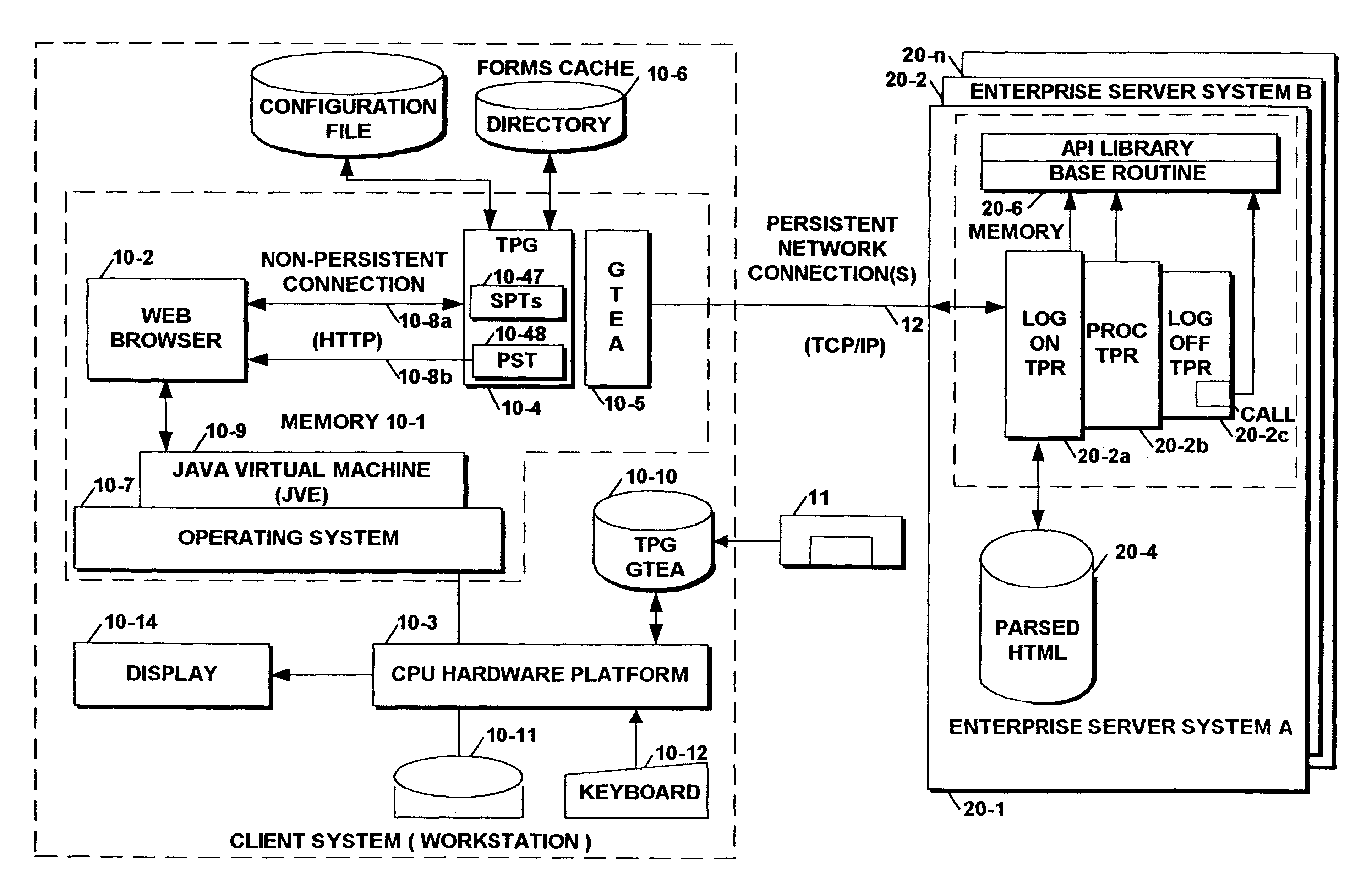Method and system for providing session pools for high performance web browser and server communications
a web browser and server technology, applied in the field of providing session pools for high-performance web browsers and server communications, can solve the problems of not offering acceptable performance, throughput and response time in a high-volume transaction environment, and time-consuming and only efficient approaches,
- Summary
- Abstract
- Description
- Claims
- Application Information
AI Technical Summary
Benefits of technology
Problems solved by technology
Method used
Image
Examples
Embodiment Construction
FIGS. 3a-1 and 3a-2--Gateway Request Processing Logic
FIG. 3a-1 illustrates the logic of component 10-40 as described in the referenced parent patent application. Briefly, component 10-40 using its listening function, listens for input connection requests from browser component 10-2 on the configured port (i.e., block 10-40a). For each browser request accepted, component 10-40 examines the request's URL to determine if it contains a session context (SC) value (i.e., block 10-40b). Next, as indicated in block 10-40c, the component 10-40 determines if the SC value equals zero. If the SC value equals zero, this indicates that a session has not been established between the browser component 10-2 and the server system 20 (i.e., "no" path). As indicated in block 10-40c, component 10-40 invokes its connection function to establish a persistent session connection via "sockets". More specifically, component 10-40 first generates a session context (SC) value and "registers" it in one of the lo...
PUM
 Login to View More
Login to View More Abstract
Description
Claims
Application Information
 Login to View More
Login to View More - R&D
- Intellectual Property
- Life Sciences
- Materials
- Tech Scout
- Unparalleled Data Quality
- Higher Quality Content
- 60% Fewer Hallucinations
Browse by: Latest US Patents, China's latest patents, Technical Efficacy Thesaurus, Application Domain, Technology Topic, Popular Technical Reports.
© 2025 PatSnap. All rights reserved.Legal|Privacy policy|Modern Slavery Act Transparency Statement|Sitemap|About US| Contact US: help@patsnap.com



